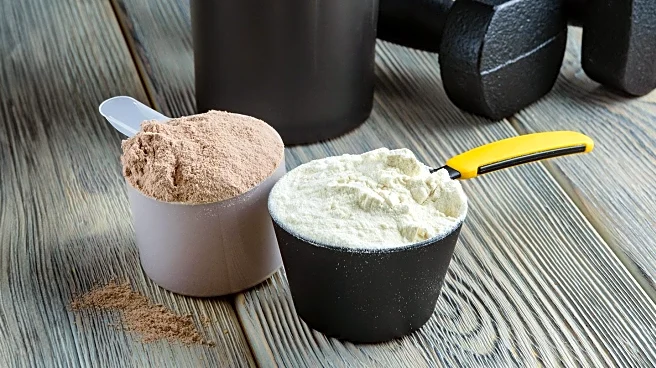What's Happening?
Recent findings highlight the potential health risks associated with microplastics leaching from common kitchen items into food. Americans are estimated to consume between 39,000 to 52,000 microplastic particles
annually through food, water, and kitchen utensils. Microplastics, defined as particles less than 5mm in length, have been linked to various health issues, including cell damage and weakened immune systems. Studies have shown that plastic containers, especially when used in microwaves, can release significant amounts of microplastics into food. Other kitchen items such as plastic spatulas, air fryers with non-stick coatings, and even tea bags have been identified as sources of microplastic contamination. The article suggests replacing plastic items with alternatives made of glass, metal, or wood to mitigate these risks.
Why It's Important?
The presence of microplastics in food raises significant health concerns, as these particles have been associated with adverse health effects. The widespread use of plastic in food storage and preparation means that a large portion of the population could be exposed to these risks. The potential health implications, such as organ damage and cancer, underscore the need for increased awareness and action to reduce plastic use in kitchens. This issue also highlights the broader environmental impact of plastic pollution, as microplastics are pervasive in ecosystems and can enter the human food chain. Consumers, manufacturers, and policymakers may need to consider more sustainable practices and materials to address these concerns.
What's Next?
As awareness of microplastic contamination grows, consumers may increasingly seek out and demand safer alternatives to plastic kitchenware. Manufacturers could respond by developing and marketing products made from safer materials. Policymakers might also consider regulations to limit the use of plastics in food-related products. Further research is needed to fully understand the health impacts of microplastics and to develop effective strategies for reducing exposure. Public health campaigns could play a role in educating consumers about the risks and encouraging the adoption of safer kitchen practices.
Beyond the Headlines
The issue of microplastics in kitchen items reflects a larger trend towards environmental sustainability and health consciousness. As consumers become more aware of the potential dangers of plastics, there may be a cultural shift towards more eco-friendly and health-conscious lifestyles. This could drive innovation in product design and materials science, leading to new solutions that minimize environmental impact while ensuring consumer safety. The conversation around microplastics also intersects with broader discussions on waste management and pollution, highlighting the need for comprehensive strategies to address plastic waste.











